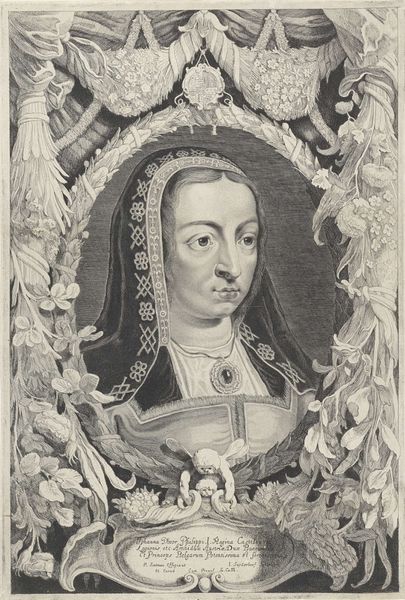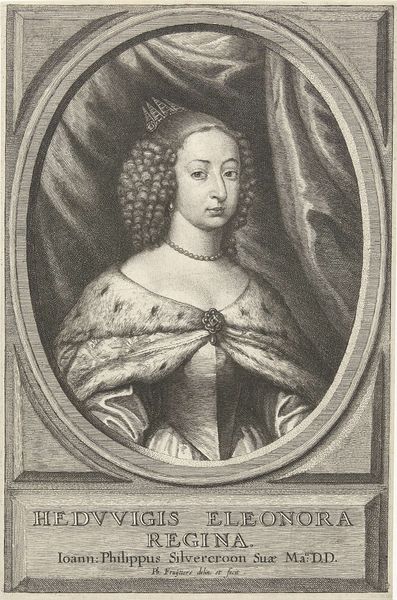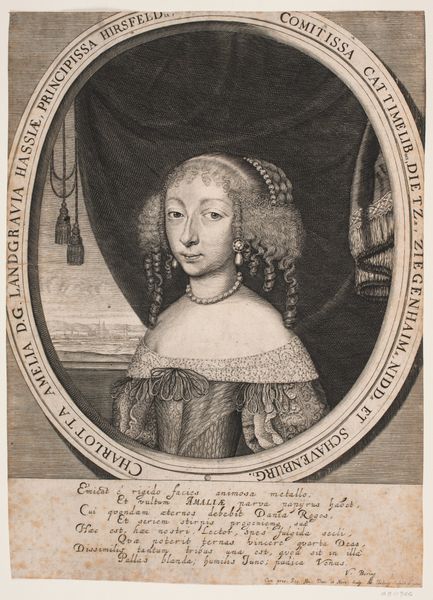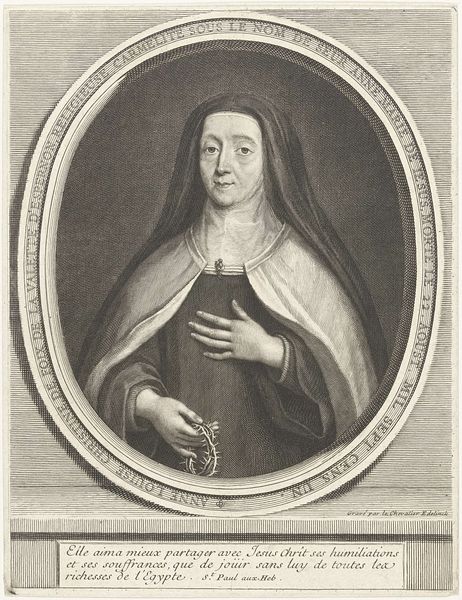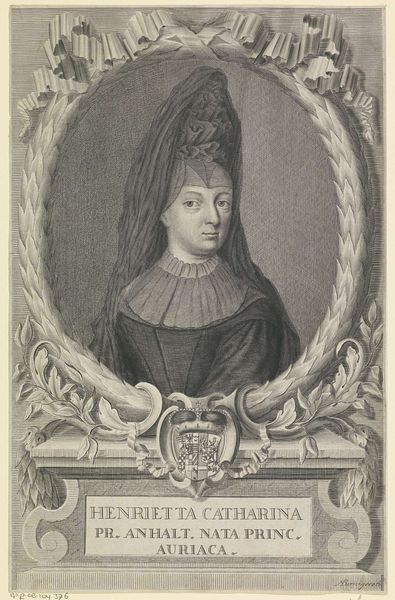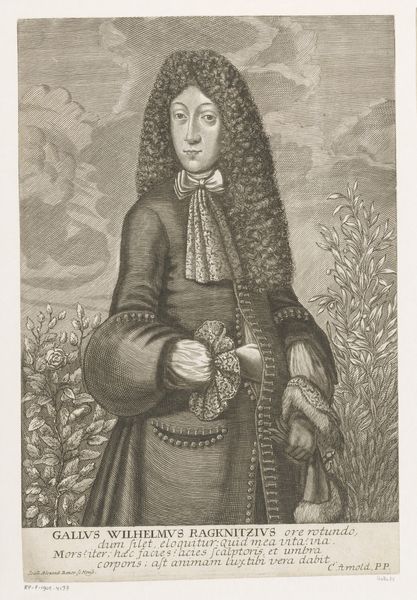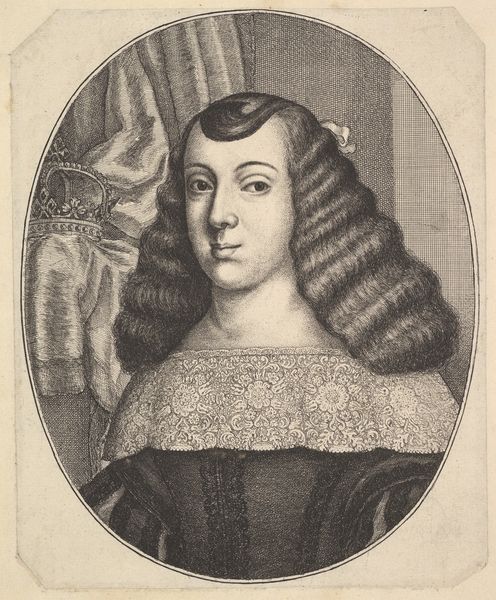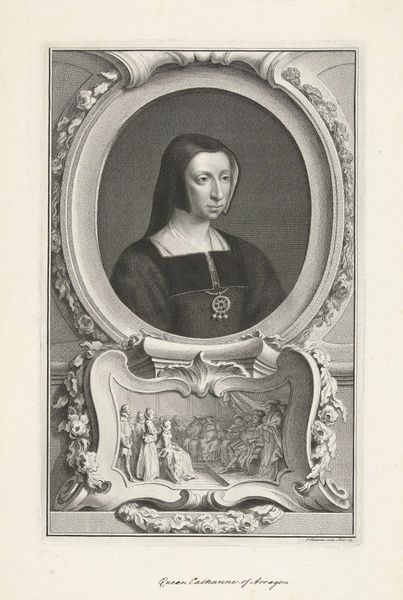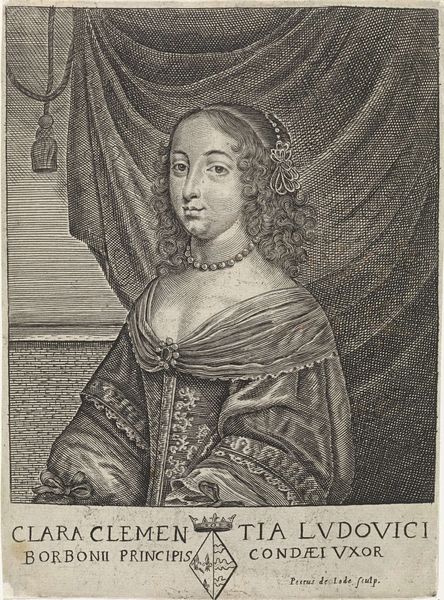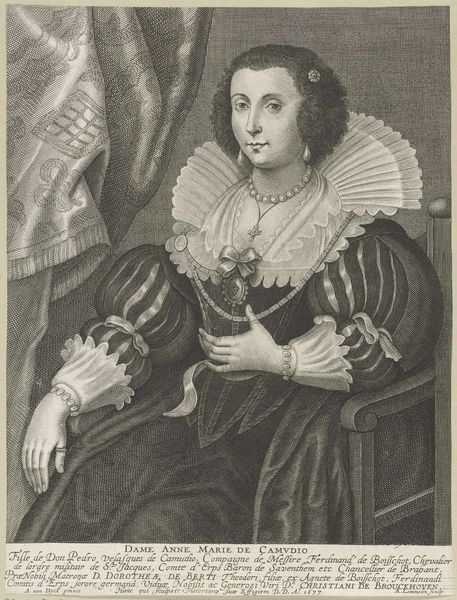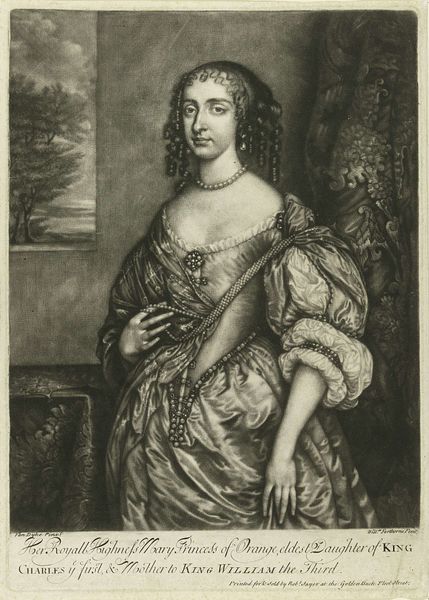
drawing, print, engraving
#
portrait
#
drawing
#
baroque
# print
#
history-painting
#
engraving
Dimensions: Plate: 13 1/8 × 9 5/16 in. (33.4 × 23.7 cm) Sheet: 13 3/8 × 9 7/16 in. (33.9 × 24 cm)
Copyright: Public Domain
Curator: Here we have William Faithorne the Elder's 1662 engraving, "Catherine of Braganza," currently residing at the Metropolitan Museum of Art. Editor: There's a distinct sense of melancholy hanging about her. Is it just me, or does the delicate lace around her shoulders create a fragile sort of halo? Curator: The historical context lends to that interpretation. Catherine's marriage to Charles II was fraught with challenges and societal expectations regarding producing an heir that she could never fulfill. Editor: Her pose is intriguing, with the gloved hand languidly held. It reminds me of similar gestures of female nobility captured across various cultures, signaling power, yes, but also vulnerability within that prescribed role. There's a timelessness in how women have historically been depicted that resonates through even an engraving like this. Curator: Precisely! Faithorne was a master of capturing the essence of his subjects within the strictures of baroque portraiture. Notice the detailed rendering of the drapery, typical of the era, symbolizing both wealth and the theatrical nature of courtly life. He presents Catherine as a regal, if somewhat constrained figure, navigating her role in a foreign and often hostile court. Editor: I see a conscious decision here by Faithorne to communicate a specific visual message. This is not just documentation, but subtle propaganda; notice her almost unwavering gaze toward the viewer? It speaks of her perseverance within the court amidst complicated circumstances that the artwork purposefully omits. She might have been experiencing challenges within her marriage, but this portrayal emphasizes a queen determined to endure. Curator: Absolutely, printmaking served a crucial role in disseminating royal imagery and solidifying political narratives in the 17th century. Consider this image not only as a portrait but as a powerful tool shaping public perception of Catherine and her place within the Stuart monarchy. Editor: Thinking about the recurring visual themes and metaphors associated with queens across time makes this engraving resonate even today. It invites reflections on societal expectations and burdens placed upon women, particularly in positions of power. Curator: Indeed. Faithorne's rendering of Catherine is not merely a likeness, it is an artifact imbued with historical, cultural, and enduring significance.
Comments
No comments
Be the first to comment and join the conversation on the ultimate creative platform.
